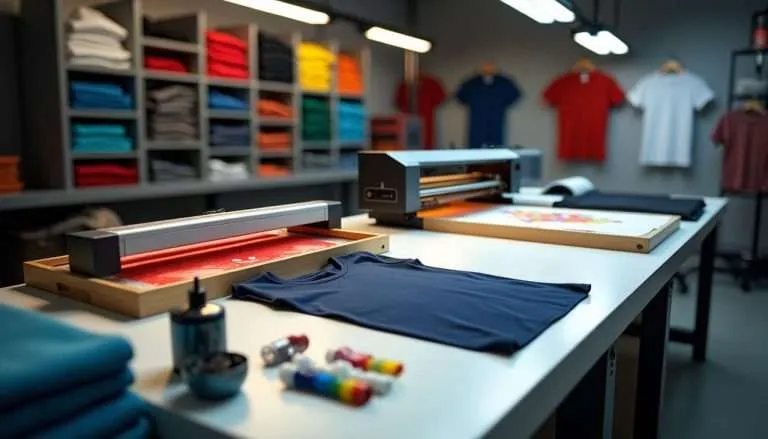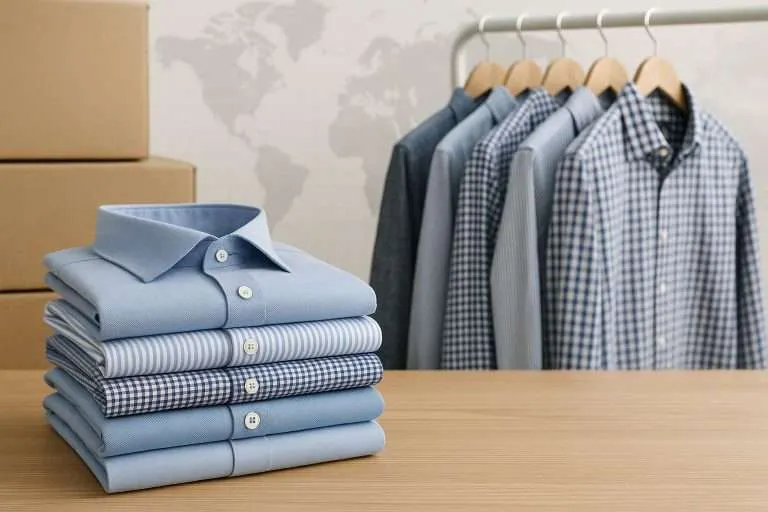Your Reliable High Quality Wholesale Custom Clothing Manufacturers

Guide Step By Step- How to Choose the Right Fabric for Custom Sweatshirts?
Sweatshirts are divided into hooded sweatshirts and round-neck sweatshirts. They are becoming increasingly popular among the public as fashionable outfits. Today, understanding the types of sweatshirts can help you make a more informed choice, especially when considering a custom sweatshirt.
As a manufacturer of custom sweatshirts, we must introduce how to choose the fabric that suits you.
Style and Characteristics:
Sweatshirt styles are generally large and casual, considering fashion and functionality, and integrating the characteristics of comfort and fashion. Sweatshirts are not limited to sports styles, but can also be matched with a variety of styles. Sweatshirt fabrics are mostly thick and warm, suitable for various outdoor activities.
Common Sweatshirt Fabrics are as Follows:
1, French Terry Fabric:
Terry cloth is a knitted fabric made with looped yarns that give it a soft and absorbent feel. This structure adds comfort and durability, making terry cloth ideal for high-quality custom sweatshirts.
Terry cloth is thicker than other knitted fabrics, and its terry part can hold more air than other knitted fabrics. Therefore, terry cloth has higher thermal insulation performance than other knitted fabrics, and people often use it to make autumn and winter clothing.
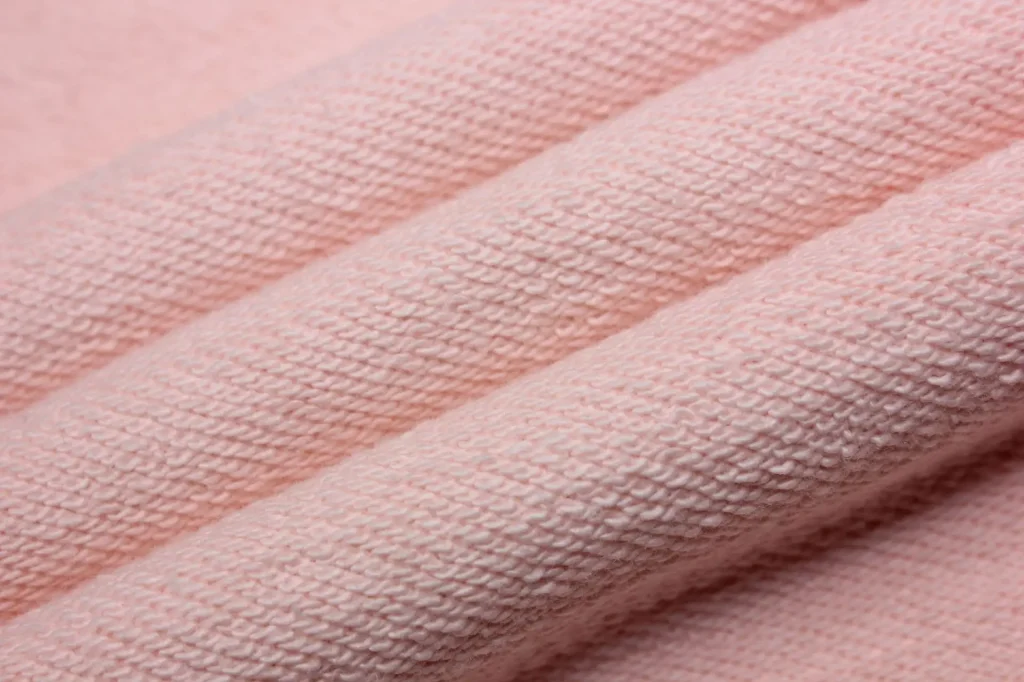
2. Fleece Fabric:
Most fleece used in custom sweatshirts is made with warp knitting machines and goes through softening processes like brushing, combing, and shaping. To enhance performance, fleece can also be treated with anti-static, water-repellent, UV-resistant, or soft-touch finishes.
a). Advantages:
- Good thermal insulation: Fleece fabrics have good thermal insulation properties and can effectively resist cold weather.
- Comfort: Fleece fabrics are soft to the touch, comfortable to wear, breathable, and not prone to sweating.
- Wear resistance: Fleece fabrics have high wear resistance and a long service life.
b). Disadvantages:
- Pilling: Fleece fabrics are prone to pilling and require careful maintenance.
- Easy to absorb hair, dust, etc.: Because the fabric has long fluff, it is easy to absorb hair, dust, etc., and needs to be washed and dried frequently.
c). How to maintain fleece fabrics
- Water temperature: Fleece fabrics are best washed in warm water with a water temperature not exceeding 30°C.
- Wash separately: Fleece fabrics should not be mixed with other clothes and are best washed separately.
- Do not soak: Fleece fabrics should not be soaked in water for a long time to avoid deformation of the fluff.
- Gentle handling: Fleece fabrics should not be rubbed or pulled too much to avoid hair loss and pilling.
- Avoid exposure: Fleece fabrics should not be exposed to the sun and should be dried naturally.
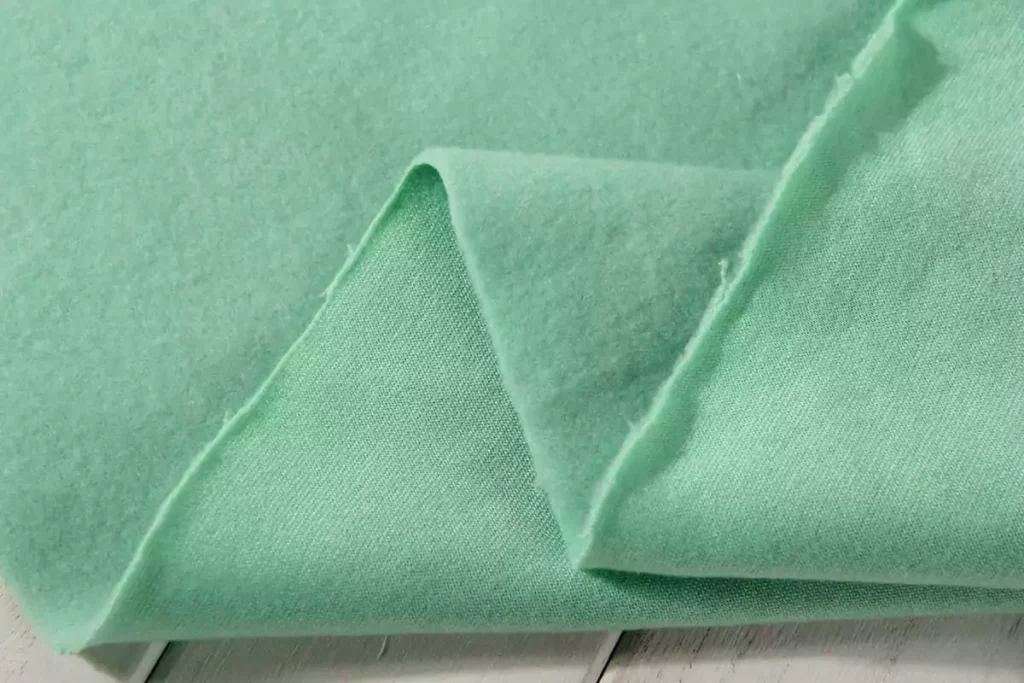
3. Polar Fleece Fabric:
Polar fleece is a soft, warm, and durable polyester fabric with a wool-like feel. Its dense, non-pilling texture makes it ideal for custom sweatshirts that offer excellent warmth and comfort without shedding.
a). Advantages:
- Good warmth retention: The warmth retention is 2 times that of wool and 4 times that of cotton.
- Lightweight: The fabric is light and comfortable to wear.
- Durable: Strong wear resistance and not easy to wear.
- Easy to care for: Not easy to shed or pill, easy to wash and maintain.
b). Disadvantages:
- Not breathable: Due to the dense fluff on the surface, the breathability is poor.
- Not suitable for long-term outdoor activities: The warmth retention decreases in humid environments.
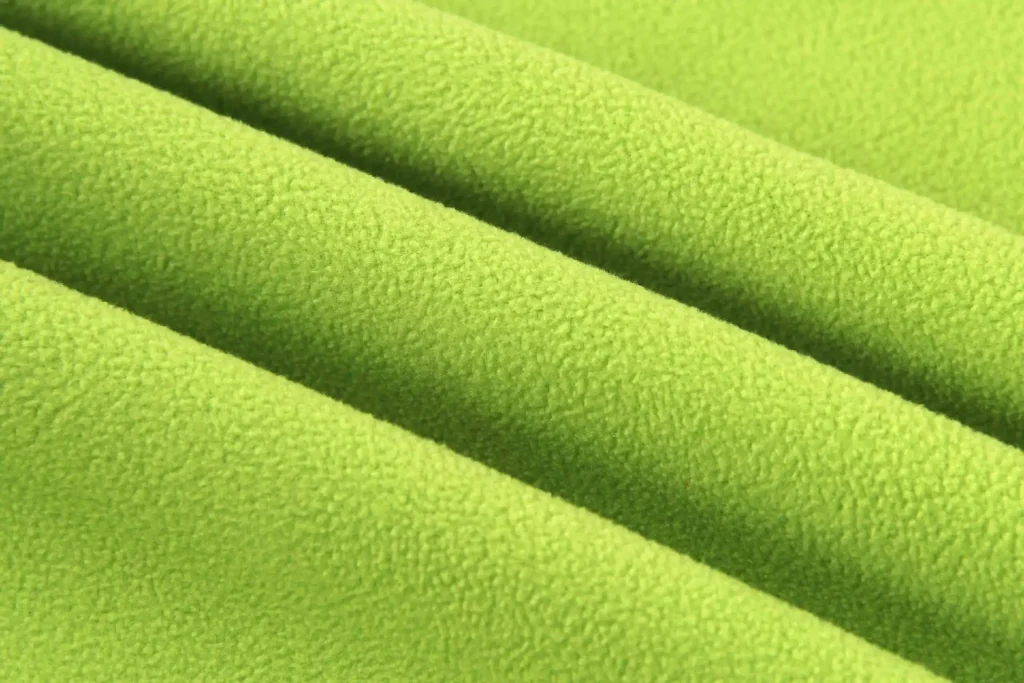
4. Silver Fox Velvet:
Silver Fox Velvet is a premium polyester fabric known for its soft, leather-like texture and fine, fur-like surface. With high fiber density and excellent warmth retention, it’s ideal for custom sweatshirts, hoodies, and winter apparel.
The main material of silver fox velvet is polyester. To increase the elasticity of the fabric, some manufacturers will add 5% to 10% spandex during the manufacturing process. This fabric is manufactured through high-tech textile technology, imitating the texture of silver fox hair, showing a luxurious touch and softness.
a). Advantages:
- Soft and delicate: Silver fox velvet feels very soft and delicate, and it is very comfortable to touch.
- Good warmth retention: Silver fox velvet has good warmth retention and is suitable for wearing in autumn and winter.
- Wear resistance: Silver fox velvet has good wear resistance and can withstand certain friction and wear.
- Various designs: Silver fox velvet can be used to make sweatshirts, thermal underwear, etc., with various designs suitable for different occasions.
b). Disadvantages:
- Hair loss: During use, Silver Fox Velvet will shed a small amount of hair.
- Static electricity: In the dry seasons of autumn and winter, Silver Fox Velvet is prone to static electricity, which may make people dislike it.
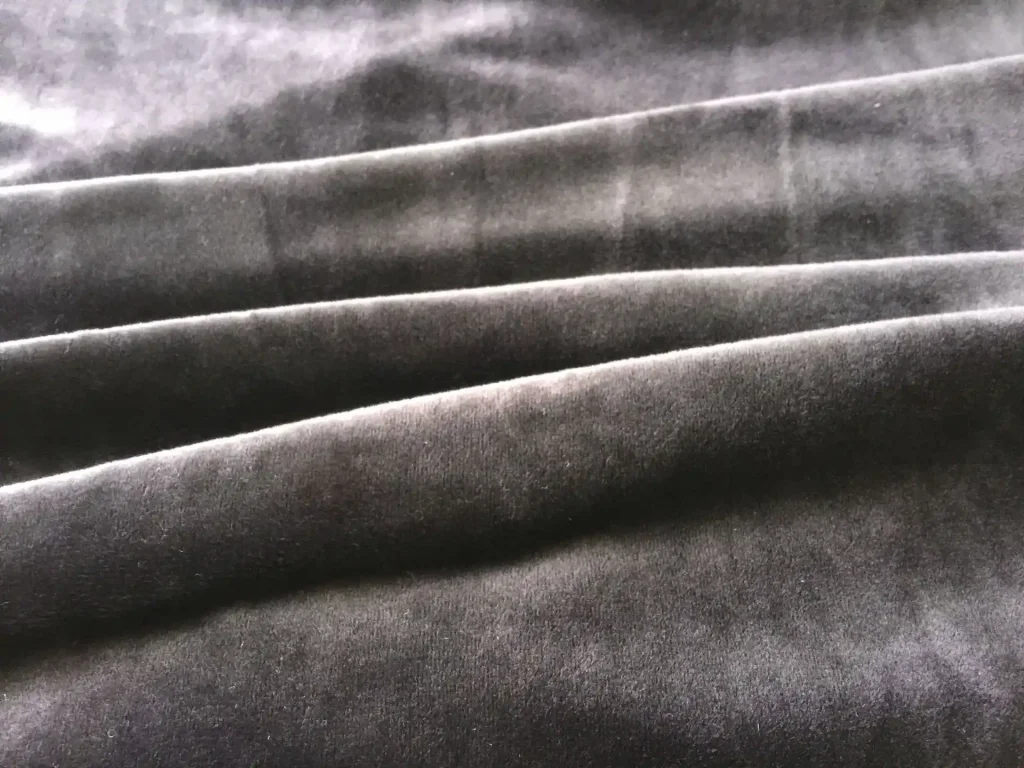
5. Lamb Velvet:
Lamb velvet is a soft, high-performance fabric made from a blend of 70% polyester and 30% acrylic—not real wool. It’s lightweight, easy to clean, and resists wrinkles, shrinking, and shedding thanks to heat-shrink processing. Ideal for custom sweatshirts, home textiles, and plush items, lamb velvet offers comfort and durability for everyday wear.
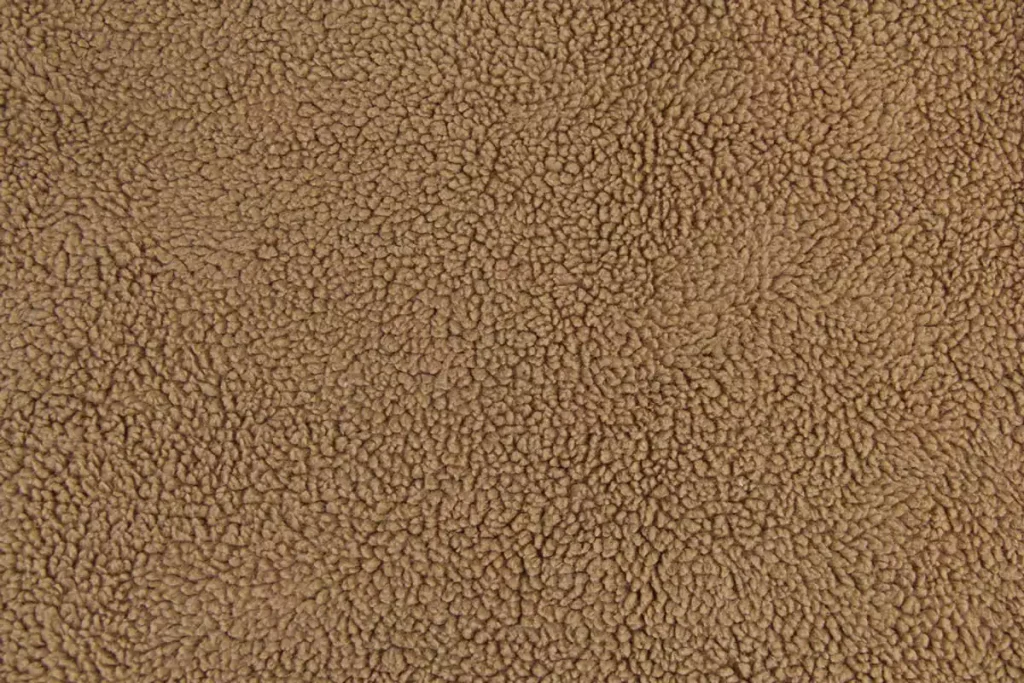
6. Non-falling velvet:
Non-falling velvet is a premium warp-knitted fabric used in custom sweatshirts. Made with spandex for stretch and softness, its velvet surface is created through a special cutting process that delivers excellent luster, comfort, and elasticity—perfect for high-end custom apparel.
Excellent luster: The surface of the non-pile fabric is smooth and reflects light well.
Elastic: Due to the use of spandex raw materials, the fabric has good elasticity.
a). Advantages:
- Soft touch: It feels comfortable to touch.
- Good warmth retention: The fabric can maintain temperature well and is suitable for cold environments.
b). Disadvantages:
- Easy to stick to hair and dust: Due to the large amount of fluff on the surface, it is easy to absorb dust and hair.
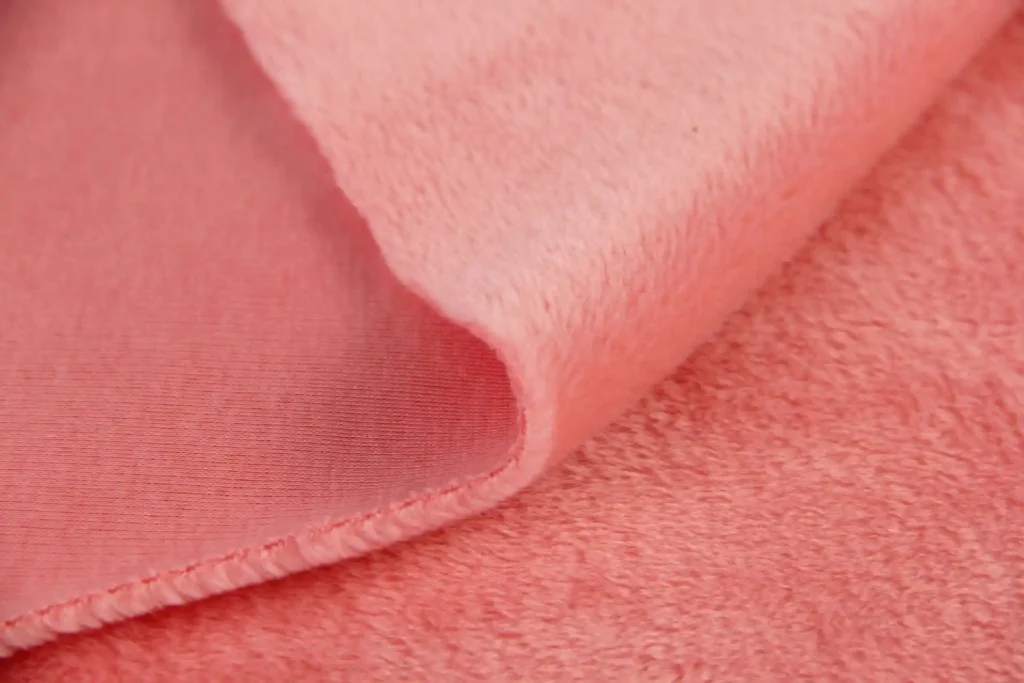
Summary: Any fabric has its advantages and disadvantages. Choosing the fabric that suits you to customize your sweatshirt is the most important thing to consider. Working with high quality custom clothing manufacturers can further ensure that every piece you create meets durability, comfort, and design standards.
If you’re exploring how to customize clothes for your brand or personal style, selecting the right material is the first step toward creating a unique, lasting garment.
Environmental Impact and Sustainability of Sweatshirt Fabrics
Today’s consumers care about sustainability. That’s why custom sweatshirts made with eco-friendly fabrics—like organic cotton, recycled polyester, and bamboo blends—are more popular than ever. These materials help reduce waste, save water, and lower energy use, while still offering comfort and durability. By partnering with custom clothing manufacturers in the USA, your brand can create high-quality, sustainable sweatshirts that appeal to environmentally conscious shoppers.
Fabric Blends for Specialized Needs
While traditional fabrics like terry and fleece dominate the market, blended fabrics have become increasingly popular for their versatility and performance. For example, a cotton‑polyester blend delivers the softness and breathability of natural fibers combined with the durability and resilience of synthetics. Meanwhile, blends with spandex add stretch for a better fit, making them ideal for activewear or sports sweatshirts. These specialized blends are ideal for brands looking to stand out with comfort, durability, and variety. Thanks to advances in manufacturing, it’s now possible for custom apparel manufacturers to produce sweatshirts that balance softness, durability, and performance — making them an ideal choice for a range of end uses.
Choosing Fabric Based on End Use
Selecting the right fabric depends largely on its intended application. For everyday casual wear, softer fabrics like French terry or fleece provide comfort and breathability, making them ideal for laid‑back styles. For sports or activewear, blends with moisture‑wicking properties and added stretch work best, ensuring comfort and performance throughout the day. Meanwhile, premium fabrics like silver fox velvet or lamb velvet add a luxurious, cozy feel that’s ideal for high‑fashion or cold‑weather pieces. By aligning material characteristics with end use, custom clothing makers can design sweatshirts that match both functional requirements and fashion trends, making them perfect for any lifestyle or occasion.
Printing Techniques and Fabric Compatibility
Different printing methods suit different fabrics, making it vital for brands to match their design and material. Screen printing delivers bold, crisp designs ideal for thicker fabrics like fleece and French terry, while direct‑to‑garment (DTG) printing shines on smoother fabrics like cotton blends. Heat transfers work well for smaller or complex designs, making them ideal for custom pieces, and embroidery adds a premium, textured feel when applied to heavier fabrics. Understanding these nuances allows clothing manufacturers for startups to create sweatshirts that not only fit the desired style but also maintain quality and durability — ensuring every piece can stand the test of time.
Frequently Asked Questions (FAQs)
Q1: What’s the best fabric for cold‑weather sweatshirts?
Fleece and polar fleece are ideal for cold climates due to their softness, warmth, and comfort.
Q2: Which fabric is best for active or performance sweatshirts?
Cotton‑poly blends with added spandex work best for activewear thanks to their durability, stretch, and moisture‑wicking properties.
Q3: What’s the most sustainable fabric for sweatshirts?
Organic cotton and recycled polyester are gaining popularity due to their eco‑friendly characteristics and lower environmental impact.
Q4: What printing technique works best for sweatshirts?
Screen printing is ideal for bold, crisp designs on thicker fabrics, while DTG is better suited for intricate designs on smooth cotton blends.



